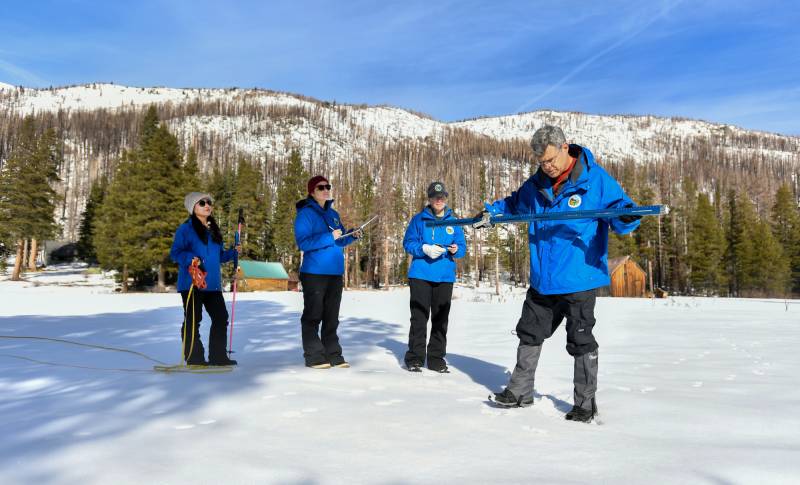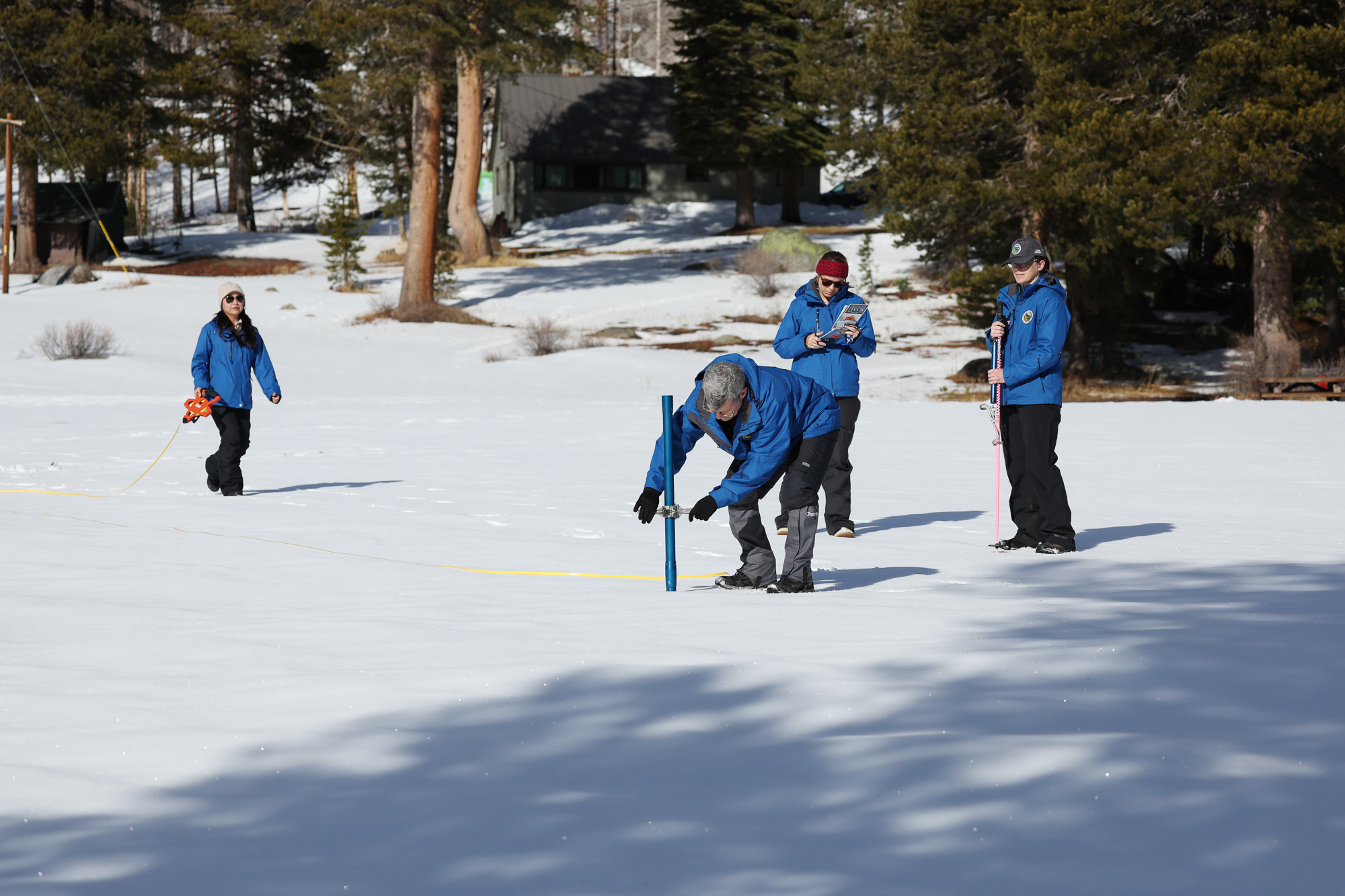The snowpack near Lake Tahoe is far larger than it was at the start of 2024 but still short of the average for this time of year, California water officials said Thursday in the first manual snow survey of the season.
The survey, conducted at Phillips Station in the northern Sierra Nevada, recorded snow more than three times deeper than what the California Department of Water Resources recorded at the same station this time last year. That figure also represents 91% of the average for previous surveys done at this point in the year.
Statewide, California’s snowpack is just above the average for this time of year and at 39% of the average for April 1, which is when officials expect to see peak levels for the year before spring snowmelt and runoff begins.



